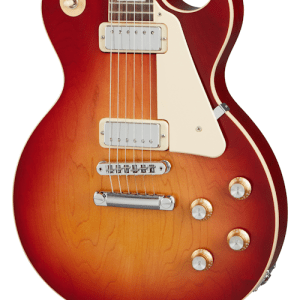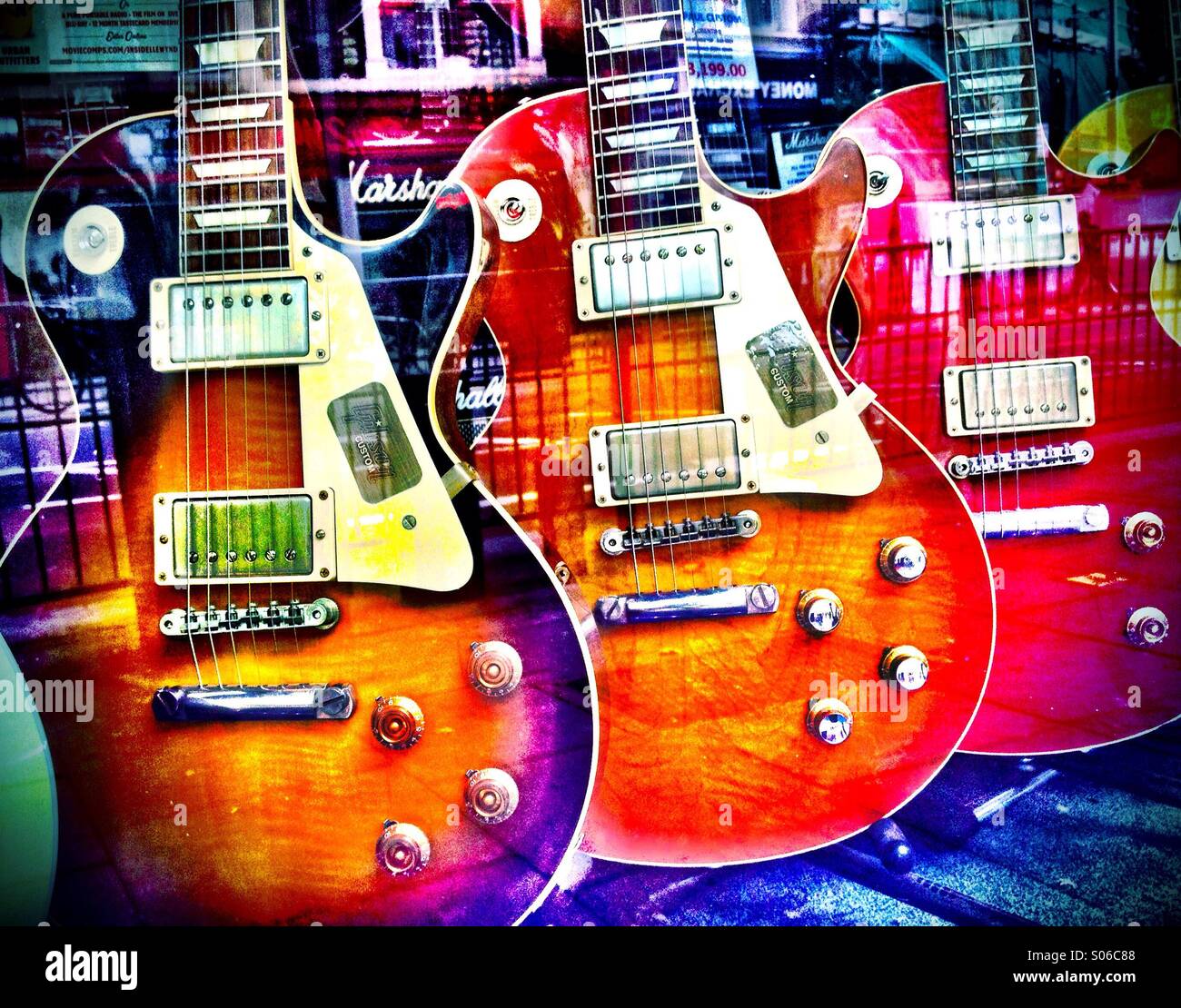The History of Gibson Guitars Woodwork. In 1955, a new guitar called the Byrdland introduced a thinner body than the original Gibson L-5. Despite its size, this guitar was surprisingly light for a heavy rock guitarist, and a hollow-bodied design caused feedback at high levels of gain. Although this would have been impractical in the world of heavy rock, guitarists like Ted Nugent embraced feedback to enhance their playing.
The History of Gibson Guitars Woodwork
Les Paul’s endorsement deal
Before signing the endorsement deal with Gibson, Les Paul had never played a Gibson guitar. The company wanted to get his endorsement because they saw a tremendous amount of commercial potential. In return, Gibson paid Les five percent of the price of each guitar sold. But there were problems. Les Paul didn’t play Gibson guitars in public, so he had to sign a contract with them to play their guitars.
The first problem with Gibson’s endorsement deal with Les Paul started when the company rejected his guitar design. Gibson only produced hollow-body electric models. Once Fender began producing solid-body guitars, Gibson contacted Paul again and asked him to endorse their new model. Gibson allowed Paul to be involved in the design of the guitar, and the resulting guitar became the signature model of guitarists around the world. This deal lasted until 1959, and the Gibson Les Paul guitars became the best-selling guitars ever.
When Les Paul partnered with Gibson, he changed popular music forever. The Gibson Les Paul solid-body electric guitar has since become the weapon of choice for countless rock legends. This guitar, known as the Number One by Les Paul, is up for auction by Christie’s Images Ltd. This fall, Christie’s images Ltd. will auction Les Paul’s personal Number One guitar.
In addition to the ES-335 and SG, Jimmy Page also played a Gibson guitar during his career. In addition, Paul played the ES-355 in his early days. Eventually, he signed an endorsement deal with Gibson and began playing a custom version. It also featured Gibson’s Tony Iommi humbuckers and Pearloid cross inlays. Since then, Paul has shaped the sound of metal. The Gibson Les Paul guitar has become synonymous with rock and roll, and Gibson is celebrating his legacy with an endorsement deal with Epiphone.
Although Les Paul has been an endorser of Gibson guitars for decades, the Custom and Goldtop models didn’t appear until a decade after the introduction of the Goldtop. Gibson may have had an initial plan to launch a full line of models, but the initial specifications were clearly set up for a variety of models. The gold finish was a clear sign of the high quality of the Les Paul guitar. Later, the Custom and Goldtop models were marketed as premium guitars, and their maple bodies and rosewood fretboards set them apart from their Fender counterparts.
The Gibson Les Paul has long been the guitar of choice of many great guitarists, and the brand offers a wide range of custom-made guitars, from the pricey Custom to the lowly priced Faded. Epiphone, a former competitor now owned by Gibson, also offers a less expensive Les Paul for up-and-coming players. But the quality and tone of these guitars are unmatched and truly distinctive.
Les Paul’s influence on Gibson guitars
While there are a number of factors affecting a guitar’s woodwork, none are as important as the influence of Les Paul. The original Les Paul model shipped in March 1952. Its woodwork was unchanged, except that the tailpiece was flipped over so the strings sat under a bar. The high bar was problematic because it forced right-hand motion changes and made it difficult to mute strings with the heel of the right hand.
In response to Les’s demand for mass-produced guitars, Gibson introduced the Telecaster in the 1950s. Designed with a utilitarian design, the Telecaster was popular, but Gibson reacted by introducing the solid-body guitar. This guitar reflected the company’s craft heritage. Les Paul endorsed the instrument and was given it. Les Paul’s impact on guitar woodwork went far beyond the Telecaster.
While the Les Paul guitar was inspired by the Strat, it is far from perfect. It was a collaboration of the factory manager and Gibson president, Ted McCarty. Les Paul’s earliest prototype featured a mahogany body and carved maple top. The neck was made of mahogany and featured a rosewood fingerboard. Gibson P-90 single-coil pickups in the body enabled the guitarist to control the volume and tone of the sound.
After Les Paul’s death, his “Number One” Goldtop guitar sold by Gene Paul’s son was a coveted collectible item. During the 1950s, Gibson recognized Les Paul’s influence on guitar woodwork. Les Paul’s “Number One” guitar was a top seller. It was sold for $500,000 and is still in existence. It has a long and storied history.
The Gold top guitar was a moderate commercial success. It was adopted by bluesmen, who were stylistically opposite to Les Paul. No guitarist bought a Les Paul because they wanted to sound like him. Les Paul’s popularity declined faster than the Gold Top by the mid-’50s. The Gibson gold top guitar’s popularity peaked around the same time. But it’s clear that Les Paul’s influence on Gibson guitar woodwork remains unmistakable.
After the birth of Gibson’s Firebird line in 1963, the company collaborated with guitarist Chet Atkins to develop an electric model. While Atkins had been playing nylon-string classical flat-tops, he wanted to make a guitar that was both functional and visually appealing. He came up with an idea that incorporated a semi-solid body and a piezo bridge pickup. The resulting CEC looks like a classical guitar and sounds like it. Nevertheless, Les Paul’s influence on Gibson guitar woodwork was so extensive that the company produced a number of variations of the acoustic guitar.

Unlike the Les Paul ES, the Gibson Deluxe was a one-piece body with a slim three-piece neck. Gibson standardized Les Paul guitars by implementing the standard one-piece body and slim three-piece neck. Besides the thin body, Les Paul’s guitars had the same pickup setup and woodwork. The only difference is that Les’s pickups used Alnico II magnets instead of PAFs.
The Les Paul guitars have become synonymous with a distinctive and powerful tone. Les Paul guitars are famous for their searing shred and eternal sustain. The wood of Les Paul is rich, dense, and thick. The pickups used in the Les Paul guitars deliver a thick, blistering tone that is bone-rattling. These guitars can unleash a sonic blitzkrieg.
Despite the Gibson Custom model not being introduced until two years after the Goldtop’s introduction, the company made a number of modifications to the original Les Paul model. The Gibson Custom was not introduced until two years after the Goldtop, and it is likely that the company was already planning a full model range when it first announced Les Paul guitars. Les Paul’s gold finish was an intentional choice to emphasize the quality of the Gibson Les Paul instrument. Gibson also included quilted maple and flame maple tops on some later Les Paul models to stand apart from the Fender line.
Despite his legendary status, Les Paul’s impact on Gibson guitar woodwork cannot be ignored. His legacy has continued to be felt across the world. Les Paul’s legacy lives on in the Gibson Custom model. Gibson recreated the original Les Paul and incorporated some of the design innovations that had made the guitar so popular in the past. Gibson has continued to innovate and has made a wide variety of Gibson guitars.

